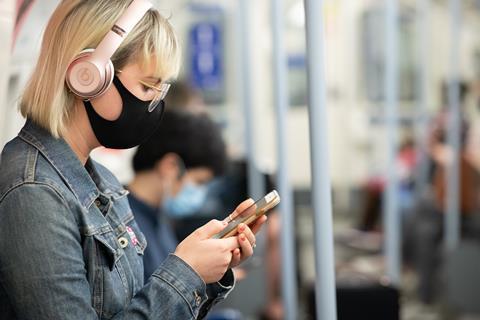
UK: Metro train passengers are at a low risk of being exposed to the coronavirus, but mitigation measures can further lower the risk, according to simulations undertaken by the universities of Leeds and Manchester and the Defence Science & Technology Laboratory.
The Transmission of Virus in Carriages computer model has been developed to determine the risk of exposure to the virus from being within 2 m of an infectious person, from aerosol inhalation and from touching contaminated surfaces.
Simulations were based on typical metro parameters, using London Underground journey data from weekdays in 2015. A low exposure was found in most scenarios, with the highest risks coming from aerosol inhalation and direct droplets in close proximity to an infected person.
The study suggests:
- high air change rates on metro trains, combined with short journey times and the use of masks, reduces the probability of airborne exposure;
- the prevalence of infection amongst passengers has the greatest impact on total exposure, and strategies to minimise the chance of infectious passengers travelling are likely to have a significant impact on risk;
- strategies to facilitate lower passenger density could have a significant impact, particularly when community prevalence of disease is high;
- high levels of mask-wearing are predicted to have a noticeable impact;
- strategies to facilitate hand hygiene for passengers soon after touching high-touch surfaces are the most effective approach to decreasing exposure from contaminated surfaces.
The computer model was developed as part of the £1·7m TRACK investigation into Covid-19 risks on trains, trams and buses which is funded by the Department for Transport and the Engineering & Physical Sciences Research Council.
‘Measuring transmission on public transport systems is challenging’, explained Dr Martin Lopez-Garcia, a mathematical modeller at the University of Leeds, when the report was published on February 8. ‘Our model provides an insight into the different factors that are likely to influence risk and should be used to effectively plan strategies that reduce the transmission of the virus.’
Principal Investigator Professor Cath Noakes of University of Leeds said ‘where journeys are short and not overcrowded, and the carriage is well ventilated, then the risks are likely to be quite low. Wearing a face covering can significantly reduce the risk of the virus spreading, particularly as it can be harder to socially distance in a tube or subway carriage at certain times of the day.’
